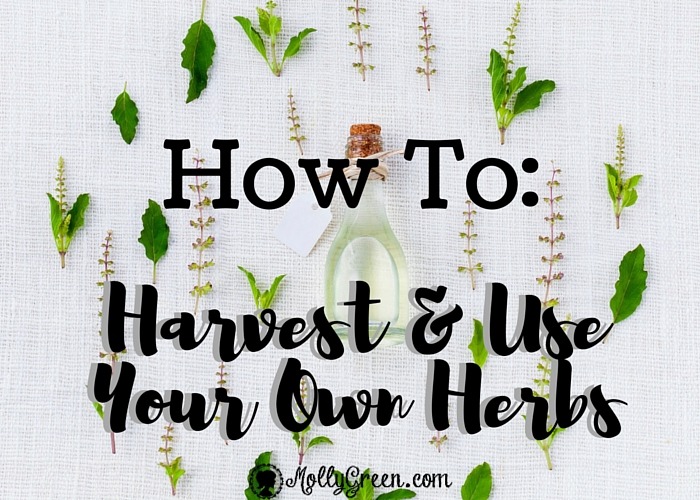By Melissa Price
Learning how to preserve herbs allows you to utilize them for aromatherapy, cooking, and general health and wellbeing. After I tend to my herbs, their wonderful fragrances linger on my arms and hands for hours. How you harvest your herbs will depend on your future plans for them. These days, I am enjoying lemon balm, lemon basil, and lemon verbena in my iced water or sweet tea.
Basic Ways to Preserve Herbs
The best ways to preserve herbs for fall and winter use are to either freeze in ice cube trays or dry the leaves. To freeze, pluck your fresh herbs from your plant and place in an ice cube tray or herb freezing tray (like this). Cover with water or olive oil and place into your freezer. When you want to use them, simply allow them to thaw or place in a hot pan.
To preserve herbs by drying, take the entire plant or stem and hand upside down in a dry, dark place. If you’re hanging multiple stems, tie them together with ribbon or string. Once dried (a week or more), store them in an airtight container for up to six months.
Preserve Herbs With Vegetable Glycerin
Preserving herbs using the hang-and-dry method doesn’t preserve softness or color very well. In order to preserve your herb’s texture and color, use a mixture of vegetable glycerin and water, along with a jar that can be sealed tightly. This method requires you shake or stir your jar’s contents daily for 4-6 weeks, so if you’re looking for a hands-off preservation method, I wouldn’t recommend this one.
If interested, read this post about vegetable glycerin.
Preserving Rosemary
Rosemary is super easy to preserve. Cut the woody stems, hang them in bundles upside down and when dried, pull the rosemary needles off and store in an air-tight container. Rosemary is wonderful on fish, in vegetables, and super yummy on grass-fed beef baked in the oven in a cast iron skillet.
Tincture Herbs
Another great way to preserve many herbs is to tincture them. A tincture is an extract using herbs and alcohol (usually vodka). Everclear is a popular alcohol (higher proof is better) used in tinctures. Some tinctures also use rum or brandy.
Popular tincture herbs include-
- Honeysuckle tinctures (good for clearing congestion and fever reduction, among many other benefits)
- Thyme tinctures (good for digestion and coughs)
- Sage tincture (good for colds, fevers, digestion)
- Mint tinctures (good for nausea and indigestion)
Tinctures take only a few minutes to make, require a few weeks to set in a dark area, and provide years of use. Some tincture recipes suggest removing the herb after the “curing” time. Other herbalists leave the herbs in the jar with the liquid. Suggested/exact dosages can be found in The Herbal Home Remedy Book, among others.
If you decided to pick up a basil or rosemary plant this year from your local garden shop, be sure to harvest its bounty before the season is out (best to pick before the plant has flowered) so you can be sure to enjoy the flavor all throughout the year. Whether dried for teas, frozen for sauces, tinctured for medicinal purposes, or bundled for cooking, learning how to preserve herbs will ensure that they are just as enjoyable months later.
A teacher, dairy farmer’s daughter, and mother of two, Melissa Price finds her joy in God, simple living, gardening, bees, and homeschooling her children.





